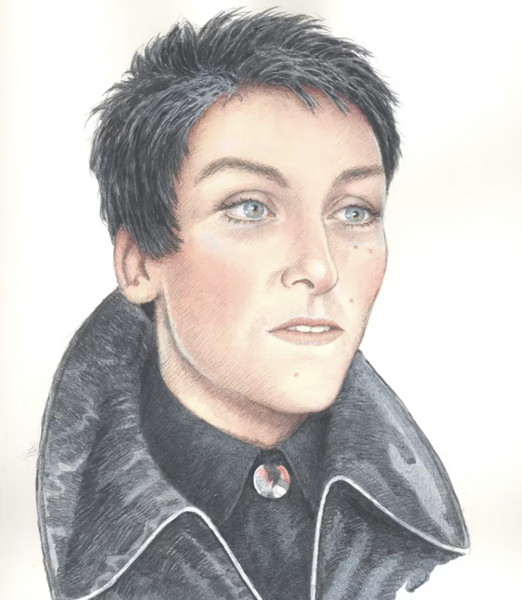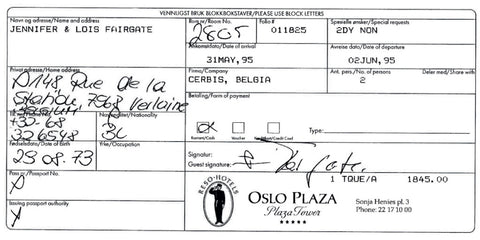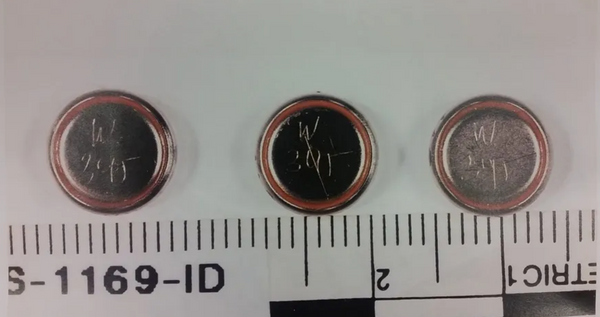An unidentified woman was found dead in a luxury Oslo hotel. Was “Jennifer Fairgate” an assassin, spy or a troubled woman looking to disappear? Her timepiece is a clue to solving a complex puzzle that reads like a Hollywood thriller.
3 June 1995, Oslo Plaza Hotel, Room 2805
The woman’s body was sprawled out on the bed, a pistol lay awkwardly in her right hand with her thumb still on the trigger– a single entry wound to her forehead. An apparent suicide; but investigators quickly noticed several anomalies: the woman had no identification and the room was absent of any clues to her true identity. In fact, she had gone to great lengths to conceal her identity, first by checking into the room in alias and paying cash, and further, she removed the labels from the limited clothing in the room and even the serial numbers on the Browning 9 mm pistol that was found with her.
There was no way of telling who she was or what she was doing, except for one obscure clue. The only item that was not modified to remove identifiers was her watch, a Citizen Aqualand worn on her left wrist.

VG/Police Evidence Photo
By any definition, the Aqualand is a robust tool watch and specifically a dive watch with strong military provenance with versions issued to many units including the British Special Boat Service (SBS) and Danish Frogman Corps. The clunky Aqualand was not the expected watch of a young fashionable Belgian woman; it was seemingly out of place.
Oslo Mystery
Nearly three decades later, the death of “Jennifer Fairgate” is still a mystery. Some theories about her death are certainly influenced by Hollywood's portrayal of the intelligence world–many speculate that she may have been an “operative” or “assassin.”
At W.O.E., we offer a fact-based assessment of her tradecraft (and watch) in an effort to better understand the reality of these so-called “operative” theories. The more we explore this incident, the more we’re left with questions rather than answers. However one thing is for sure–her Citizen is a piece of the puzzle that could offer clues to her identity and trade.

Artistic rendering of “Jennifer Fairgate” (Harald Nygård)
29 May 1995, Oslo, Norway
The woman checked into an upscale hotel three days prior without a credit card, using the throwaway alias “Jennifer Fergate.” Conflicting reports indicate she may have been with a man, “Lois Fairgate'', who was later added to the room registration. ‘Jennifer’ provided a nonexistent address in Belgium on the registration card, and she wrote down a date of birth that indicated she was 21 years old, though forensic pathologists would determine she was approximately 30 years old. As detailed in a Netflix series Unsolved Mysteries, she spent the next few days outside the room with a Do Not Disturb sign on the door.

On June 3rd, a number of days after she had checked in, hotel staff knocked on room 2805 in an attempt to collect payment from Fairgate. While a member of the hotel staff was at the door, a gunshot was heard inside. The employee left the room unsupervised for 15 minutes as he retrieved the head of security. When they returned, the room was locked from the inside. When they entered the room they reportedly smelled gunpowder, presumably from the recent shot fired in a confined space, and saw the dead body lying on the bed, shoes still on.

VG/Police Evidence Photo
While Occam's razor would lead to the conclusion that this was a distraught woman set on committing suicide and disappearing forever, many have speculated that she was in fact an “intelligence operative,” maybe even an “assassin” disposed of after a failed assignment. In the documentary, former Norwegian Intelligence Service officer Ola Kaldager assessed ‘Jennifer’ was an intelligence officer and her death was meant to look like a suicide, even though she was, according to Kaldager, executed.
Intelligence Officer Tradecraft?
From a tradecraft perspective, Fairgate’s profile is potentially consistent with that of an intelligence officer. The use of hotels for operational purposes is as old as espionage itself and is still a common practice today (though much more difficult with the rise of Ubiquitous Technical Surveillance). Based on logs from the keycard reader, she was absent from the room for extended periods of time, at one point for approximately 20 hours, which could indicate operational activity.

While at CIA, I often leveraged similar tradecraft to what was used by ‘Jennifer’ when it came to hotel meetings and operational travel. The use of “throwaway aliases” is common, and Russian “illegals” even go as far as to assume the identity of a deceased child, the name and date of birth collected by Directorate S assets from graveyard or church registries.
Another element that points to “Jennifer” having utilized tradecraft has to do with her clothing. A search of the room revealed few personal items, except for several changes of clothes for her upper body including sweaters and trenchcoats, which could be used for profile changes while operational. While removing tags from clothes is not necessarily common, intel collectors are trained to remove all pocket litter or anything identifiable when in alias.
Assassination?

There was a 15-minute gap between the sound of the gunshot and the arrival of hotel security. The room was locked from the inside, something that in theory could have been done by a professional during a hasty escape.
Investigators have pointed out the awkward grip of the pistol and the fact that there was no blood splatter on “Jennifer’s” hand as possible indications that there was another shooter. There was a second bullet hole through a pillow and into the mattress, which in theory could have been a test shot from Jennifer or a warning shot to scare the hotel attendant at the door. Of note, many intelligence services have carried out targeted killings (assassinations) with the goal of making it look like a suicide, most notably the Russian KGB/FSB and Israeli Mossad, two services with a history of operational activity in Norway.
The Watch
The Citizen Aqualand is a purpose-built and robust tool watch, designed specifically for subaquatic duty, complete with a depth gauge and a no-decompression limit (NDL) chart on the strap. When it comes to tool watches, this is about as tool-like as it gets.

Various references of the Aqualand have been issued to and worn by Special Operations maritime units throughout Europe, including the Italian Navy, UK Special Operations, and notably, the Danish Frogman Corps (Frømandskorpset). That the watch is issued to the Danish Frogmen Corps is noteworthy, as it neighbors Norway, where the “Jennifer” was found.

Tony, a British SBS operator, 25 November 2001, Qala-i Jangi, Afghanistan wearing a Citizen Aqualand Dive Pro Master, which was issued to SBS “Z-Squadron" which specialized in underwater attack and insertion using Swimmer Delivery Vehicles (SDV)
While correlation doesn't equal causation, the Citizen Aqualand is not a watch one wears by accident and wearing it starkly contrasts the semi-fashionable outfits found with the woman. In the intelligence business, a robust watch is a must and the dual analog/digital features would be an effective tool of espionage. In the 1990s, the Aqualand was popular amongst divers. It is entirely possible the woman behind Jennifer Fairgate was a diving enthusiast who lived by or traveled frequently to the coast. As Jason Heaton, diving enthusiast and friend of W.O.E., would later say, “the Aqualand became, in effect, the last dive watch built for, and bought by, real divers who needed a tool for timing dives.”

No-deco limits printed on the strap (Jason Heaton)
It’s an analytical leap to conclude that because the watch has strong ties to the military and is an issued watch, that “Jennifer” was an intelligence officer. But what can the watch tell us? To know, we have to look beyond simply the make and model of the watch.
Tracing the Watch
According to an investigative report by newspaper VG, the Citizen Aqualand reference CQ-1021-50 was manufactured three years prior in January 1992 with the serial number C022-088093 Y, 2010779, GN-4-S. This was confirmed by Citizen at in Japan. The watch contained three Swiss-made Renata 370-type batteries made in December 1994. The batteries were crudely engraved “W395,” which investigators believed means they were installed March 1995 and “W'' may indicate the initials of the watchmaker. Some online outlets have suggested the watch was purchased in Germany, but there is no substantial proof of this claim. The watch was reportedly later sold at a police auction. Of note, Watchmakers often record their work on the inside caseback of a watch with a light engraving, or in this case, on the battery itself with a hand-engraved note. It lets other watchmakers know in the future what’s been done and when.

Wilderness of Mirrors
The intelligence world is often referred to as the “wilderness of mirrors,” a space where the truth is complicated and nothing is as it seems. We spoke with John Sipher, who ran the CIA’s Russia operations, for his assessment in the incident. Sipher, who also served in Nordic countries during the 90s, explained that Norway and Scandinavian countries have long been of interest to Russia due to the proximity and strategic issues including the Baltic Sea, oil, and as an opening to Western Europe. In fact, as recently as October 2022, Norway’s domestic security agency arrested Mikhail Mikushin, a suspected Russian GRU (military intelligence) “illegal” posing as a Brazilian academic, José Assis Giammaria.

Anna Chapman, A Russian “Illegal” arrested in the US as part of the Illegals Program, a Ulysse Nardin on her wrist.
Given the information available, Sipher said that it is possible Fairgate was a Russian intelligence officer or asset, but that it’s just as likely she was involved in organized crime, and that the two were not always mutually exclusive during that period.
Russian Organized Crime
Sipher explained that in the 1990s many former KGB officers had gone on to work for organized crime after the collapse of the Soviet Union. KGB “formers'' were some of the few Russians that knew how to use international banks and could effectively carry out tasks in Europe. In fact, in the post-Cold War years there was “much more overlap of Russian organized crime and intelligence and the two were often synonymous.” Sipher pointed us to a quote by former Director of CIA James Woolsey from 1993-1995:
“If you should strike up a conversation with an articulate English-speaking Russian… wearing a $3,000 suit and a pair of Gucci loafers, and he tells you that he is an executive of a Russian trading company…then there are four possibilities. He may be what he says he is. He may be a Russian intelligence officer working under commercial cover. He may be part of a Russian organized crime group. But the really interesting possibility is that he may be all three and none of those three institutions have any problem with the arrangement.”
While she may fit the profile of a Russian intelligence officer, asset or “illegal,” there is a lack of indicators connecting Fairgate directly to Russia.
East German Intelligence

Former East German Intelligence “Stasi” compound in Berlin.
Sipher further explained a similar phenomenon with former East German intelligence officers leveraging their skills for employment after the unification of Germany and disbandment of the East German Stasi (Ministry for State Security). Stasi officers had close contact with Soviet officials, were renowned for their sharpness and capabilities, and were often recruited by Russian services to carry out operations in Europe. German nationals could easily move around Europe without raising suspicions.

Stasi ID card used by then-KGB officer Vladimir Putin from 1985-1990 in Dresden, East Germany. The card was found in a Stasi archive.
While this is informed speculation, it’s possible that Fairgate was a former East German intelligence officer working on behalf of Russian intelligence or a criminal organization. There are several indications that Fairgate had ties to East Germany including her accent when checking in and forensic analysis of her DNA. Some of her clothes, including potentially her watch, originated in Germany. This links back to the theory that the watch was serviced in Germany.
Mossad, Israel and The Oslo Accords

The Oslo Plaza Hotel was also reportedly one of the locations of secret negotiations between Israel and the Palestinian authorities for the Oslo II Accord, signed a few months after Fairgate’s death. While evidence is only circumstantial, it is possible that there is some nexus to this event and that Fairgate was an Israeli operative or the target of a Mossad assassination.
Mossad has a long history of both deep cover operations and targeted killings. In January 2010, a team of Mossad operatives (many under European alias) assassinated Hamas official Mahmoud al-Mabhouh in his hotel room in Dubai using an injection to make it appear to be of natural causes. They locked the room from the inside and the body was not discovered until the following day.

Israeli operative (tennis players) track Mahmoud al-Mabhouh to his hotel room.
In fact, Mossad has carried out at least one botched assassination in Norway: in 1973, when a hit team mistook a Moroccan waiter for that of Black September member Hassan Salameh, they shot him 13 times with a 22-caliber pistol, in what became known in intelligence circles as the “Lillehammer Affair.” While there is nothing directly connecting Fairgate to Israel, Mossad is widely known to use dual-citizens for covert and clandestine operations.
It is important to note, while Israel has issued several dive watches to elite units, we are not aware of any direct tie between the Citizen Aqualand and Israeli Defense Forces or Mossad.

Black September member Hassan Salameh, target of Israeli assassination program after Munich attack.
Conclusion
While we cannot say definitively, there are several anomalies with this case that suggest the woman known as “Jennifer Fairgate” may have been involved in intelligence activity. That said, it’s also entirely possible that she was involved in some other illicit activity or potentially worked as an escort. Espionage is often referred to as the “world's second oldest profession” and at times has a similar profile to the first.
The reality of the intelligence world is more mundane than portrayed in Hollywood. That said, assassinations, deep cover, and high-stakes movie-like operations certainly do happen. In intelligence collection, the mosaic of puzzle pieces are rarely all collected and for now the picture of this event is opaque. We’re only seeing part of the story, and perhaps it’s not even the ending.
This could have been a covert operation carried out by the Russians, Israelis or a host of other services, but it is just as likely it was the case of a desperate woman, looking to leave this world behind without a trace. If that is the case, she certainly achieved her goal.
The watch is still an outstanding clue and may be the only lead to her identity. Somewhere there is a watch maker who installed the battery in that watch, which may provide additional information on her origin.
If you enjoyed this article, please consider signing up for our weekly free newsletter for further updates HERE.
*For more information on this incident, check out the Netflix series Unsolved Mysteries and the comprehensive investigative report by VG, “Mystery at the Oslo Plaza”
--
This Dispatch has been reviewed by the CIA’s Prepublication Classification Review Board to prevent the disclosure of classified information.
READ NEXT: Special Boat Service OMEGA Seamaster









36 comments
Great read. I got wrapped up in the mystery and forgot the one reason why I was even reading, the watch. Thanks for putting together great pieces as this.
Re: article.
Author says there was no blood splatter on victim’s hand. In the case of a close contact gunshot wound to the skull absence of blood on the hand is normal, but a photo of the wound is helpful. Gunshot residue on the shooter’s hand would have been done by police. Absence of a suicide note is not uncommon in suicides.
Most Fascinating! While I can’t really connect any other dots, the placement of her thumb, position of the pistol, and as stated in the article, lack of blood on the hand, really makes the “self deletion” angle a bit suspect.
It gives me an idea for a mini series. Each episode shows her from a different suspected angle, Israeli operative discovered and deleted, Russian operative discovered and deleted, Russian (or some other) organized crime syndicate member deleted (for a myriad of nefarious reasons), and then a woman on the run from her past, present, or future, not having anything to do with any of the previous speculations. Each episode ends with her arriving at the hotel, but the beginning/middle of each episode tells the suspected story of her being. The final episode culminates with with the hotel, the death, the clothes, the Citizen watch, the investigation, and closes as a cliffhanger, not knowing what truly happened. Hmmmm, which actress could pull this off?
Very interesting story. I am sure you are spot on with the espionage theory, your article is so enlightening. Thanks for being articulate and professional, and i enjoy reading all of them, especially this one.
I wonder if the fact that she wore the ‘gold’ accent variant of the aqualand means anything, seeing as its less likely military units would issue this variant and not the all steel color classic one. Also there seems to be a punctured hole in the band made specifically to fit her smaller wrist size, Not originally by the manufacturer but still done quite precisely in distance from the original holes.